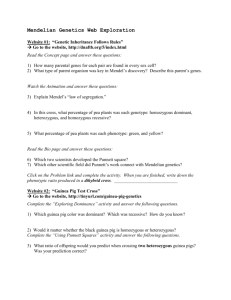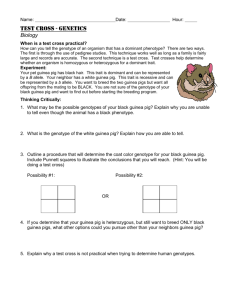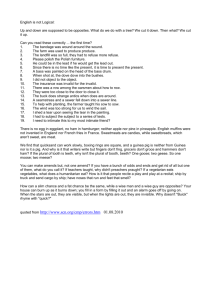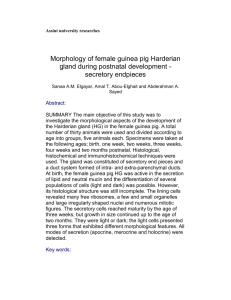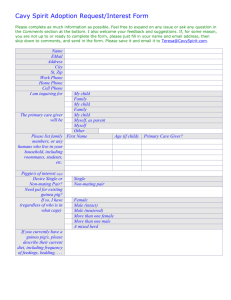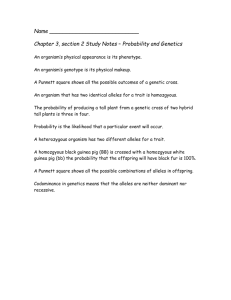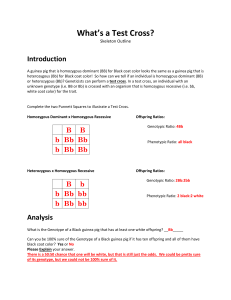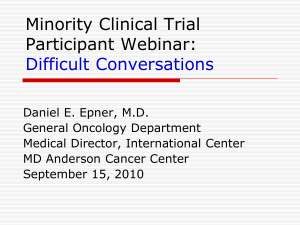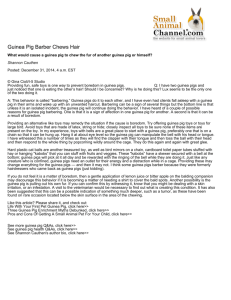Ecology Unit Outline - nnhsbiology
advertisement
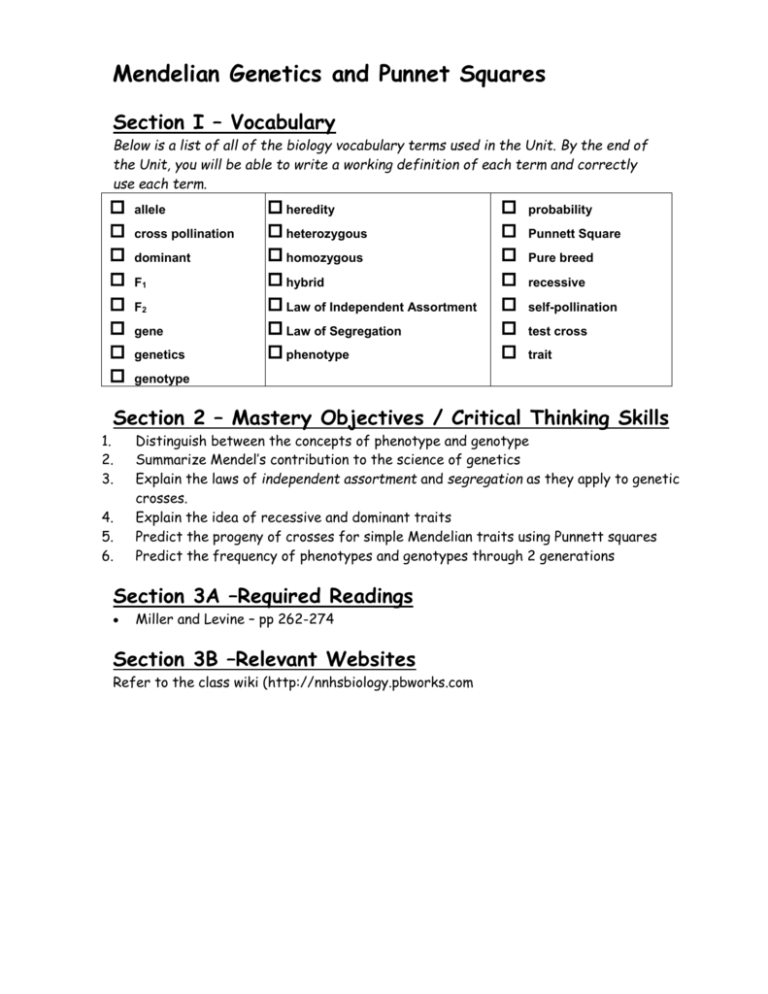
Mendelian Genetics and Punnet Squares Section I – Vocabulary Below is a list of all of the biology vocabulary terms used in the Unit. By the end of the Unit, you will be able to write a working definition of each term and correctly use each term. allele cross pollination dominant F1 F2 gene genetics genotype heredity heterozygous homozygous hybrid Law of Independent Assortment Law of Segregation phenotype probability Punnett Square Pure breed recessive self-pollination test cross trait Section 2 – Mastery Objectives / Critical Thinking Skills 1. 2. 3. 4. 5. 6. Distinguish between the concepts of phenotype and genotype Summarize Mendel’s contribution to the science of genetics Explain the laws of independent assortment and segregation as they apply to genetic crosses. Explain the idea of recessive and dominant traits Predict the progeny of crosses for simple Mendelian traits using Punnett squares Predict the frequency of phenotypes and genotypes through 2 generations Section 3A –Required Readings Miller and Levine – pp 262-274 Section 3B –Relevant Websites Refer to the class wiki (http://nnhsbiology.pbworks.com Section 4 –– Outside Class Assignments Thoughtfully do each of the following assignments. Include all your reasoning and work wherever it seems appropriate due dates for each assignment will be given in class. (Please remember - homework that is passed in late is automatically discounted 15%.) 1) Build a concept map with the following terms: dominant, recessive, phenotype, genotype, heterozygous, homozygous, purebred, hybrid, trait and gene. 2) Mendel has been called the “Father of Genetics”. He is credited with formulated two laws, 1. The Law of Independent Assortment and 2. the Law of Segregation. a) State the Law of Independent Assortment b) State the Law of Segregation c) Fill in the attached compare and contrast graphic organizer showing what the two laws have in common how they are different. 3) Assume that right-handedness is dominant to left-handedness and brown eye color is dominant to non-brown eye color. A brown eyed, right-handed man marries a blue eyed-right handed woman. Their first child is left-handed and has blue eyes. a) What are the genotypes of the parents? b) If they have more children, what might their genotypes and phenotypes be? 4) A wild population contains red-eyed and white-eyed flies. A scientist crosses two white-eyed flies and gets all white eyed progeny (cross 1). She crosses two red eyed flies and gets all red-eyed progeny (cross 2). When she crosses a different pair of red-eyed flies, she gets 22 white eyed progeny and 78 redeyed progeny (cross 3). Explain her observations, giving the most probable genotypes of the parents and progeny of each cross. 5) Your younger sister and her best friend have a get rich quick scheme. They are planning to make money this summer by breeding guinea pigs to sell to Newtonville Pet Store. Newtonville Pet will pay $12.00 for each black, smooth coated guinea pig, $5.00 dollars for each white, rough coated guinea pig and $2.00 for each white, smooth coated guinea pig. You already have a white rough coated guinea pig that your sister is thinking about asking to “borrow” for the task. Knowing that you have already studied genetics, they ask your advice. (FYI: black coat color and smooth fur are recessive traits in guinea pigs.) a) Should they breed the guinea pig you already have with another guinea pig? b) If yes, what would be the best choice for a second guinea pig to breed it with? c) If they can’t use your guinea pig or decide not to, what choices would you suggest for their breeding pair to maximize their profits?

